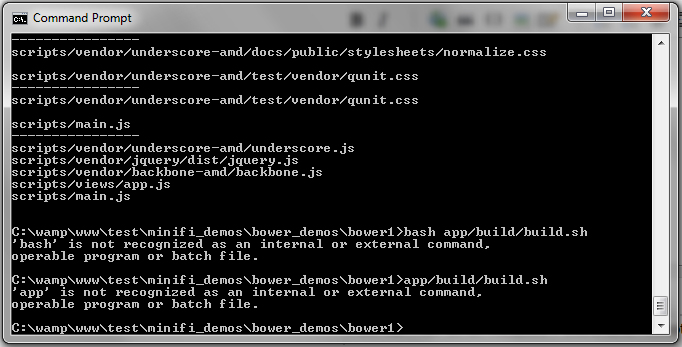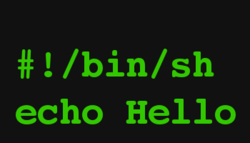

- Shell script find word in file software#
- Shell script find word in file code#
- Shell script find word in file free#

In this article, we are considering one text file as shown below. I need a script to search through a directory and find files containing text string abcde1234 for example and then copy that file. In fact, the Get-Content command in PowerShell is used to read almost any type of file content. To search for the word in PowerShell and replace it in the file we will use the string operation.
Shell script find word in file software#
grep -o -i needs inspire. PowerShell Microsoft Technologies Software & Coding. GNOME is developed by the GNOME Project, which is composed of both volunteers and paid contributors, the largest corporate contributor being Red Hat.
Shell script find word in file free#
Then pipeline it to wc in order to get the number of lines which is ultimately the number of occurrences of the word. GNOME (/ n o m, n o m /), originally an acronym for GNU Network Object Model Environment, is a free and open-source desktop environment for Unix-like operating systems. The first part of the command looks for the word Walden in any files in the current directory, and the second runs another grep command on the results of the first command. Use the o switch to get each of the output as a new line. You’d use this command: grep Walden * | grep Pond. Say you want to find files containing both Walden and Pondon the same line. Using the pipe ( |), a Unix redirection operator, you can tell grep to search for more than one string. (Note that you can also combine options-for instance, grep -rl Walden searches subfolders and returns only a list of files containing the word Walden. Get started with the helpful options listed here. Here are the notes from the find command man page on specifying the size setting:-size ncwbkMG File uses n units of space. I used 6 because some of my log files may be that deep under the root Linux directory. The grep command has several options that let you fine-tune the way you search for text, as well as the kind of results grep returns. Note that you can modify the find command maxdepth setting as desired. Returns the names of files containing Walden and the number of hits in each file. tr '' '' < inspire.Finds Walden in any file in any subfolder of ~/Documents.įinds only live does not find liver, lives, lived, and so on.įinds files containing Walden, but returns only a list of file names. Finally count the number of occurrences of the specific word by using the -c switch of grep for count and -i switch for ignoring the uppercase/lowercase word. So we translate all the spaces into a new line and then grep for the pattern. at the command-line, or within a shell script, to edit a file non-interactively. The tr command translates one string to another. buffer, compares it against the search string, and if the comparison.
Shell script find word in file code#
Running the above code gives us the following result − 3 Using tr command Then pipeline it to wc in order to get the number of lines which is ultimately the number of occurrences of the word. Use the –o switch to get each of the output as a new line. We grep for the word “needs” in the file.

log files for both ed and teresa strings. Because the pattern parameter also accepts an array of strings, I can also search the. The command and associated output are shown in the following figure. Finally, the result can be pipelined to wc to get the final count.In this example we count the number of occurrences of the word “needs”. Select-String -Path c:\fso\.txt, c:\fso\.log -pattern ed. Also we can use the -i switch for ignoring the case of the word found. The grep command finds the pattern but it has some switches which can be used to print the pattern in new line every time it finds it. $ cat inspire.txtĪnd it needs time and other resources. There are various methods to perform split string in bash. Lets use the below file for demonstrating the examples. To get this working use the -Command Parameter instead of the -File parameter and set the. Below are the approaches which can be used for this need. This is achieved by combination of commands for pattern search and counting. One such example is to count the number of occurrences of a specific word in a given file. One such feature is to find patterns and count the number of occurrences of matched patterns. I have the below script which looks for the file in the current directory and evaluates to true if the file exists in the directory and evaluates to false if it does not /bin/bash printf '\ Ple. Linux shell scripting has many powerful tools to process the data in files.


 0 kommentar(er)
0 kommentar(er)
